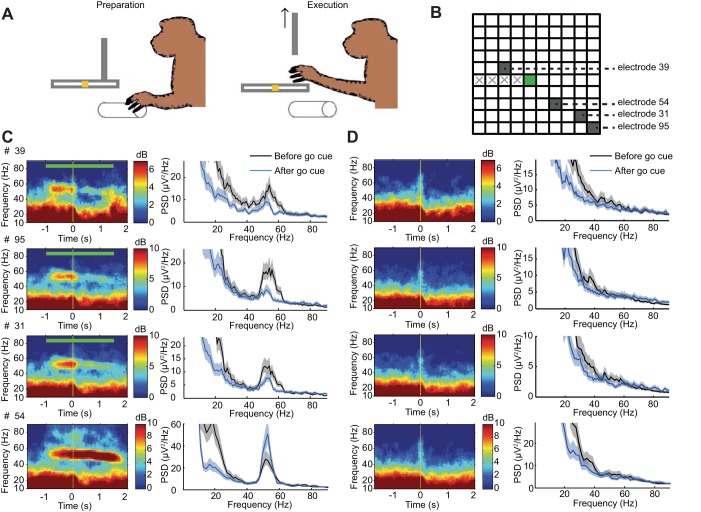Fig. 7.
Optogenetically induced gamma oscillations during movement preparation are suppressed upon voluntary movement execution. A: cartoon of the task: the subject (subject T) rests his hand on a stationary stick in preparation for a reach-and-grasp movement until an opaque door blocking the food tray is lifted (go cue). The reach-and-grasp movement (toward a food pellet) is then performed. The movement preparation period lasted at least 1 s, and the movement execution period (terminating at the pellet grasping time) ranged from 1 to 1.5 s. Optical stimulation (constant square pulse; green line on plots) was turned ON during the preparation period and lasted 2.5 s, overlapping with the movement execution period. B: positions of the 4 recording electrodes in C and D. C: across-trial (n = 40 trials, 1 session) average LFP spectrogram and PSD for 4 microelectrode recording sites. (Of those 4 sites, 3 showed substantial attenuation of induced gamma on movement execution phase.) PSD was computed on a time window covering 0.5 s before the go cue (black) and 0.5 s starting 150 ms past (blue) go cue onset. Shaded areas indicate 95% CIs. D: same as in C but in control trial (n = 40) where no optical stimulation was presented while the subject performed the same task.

